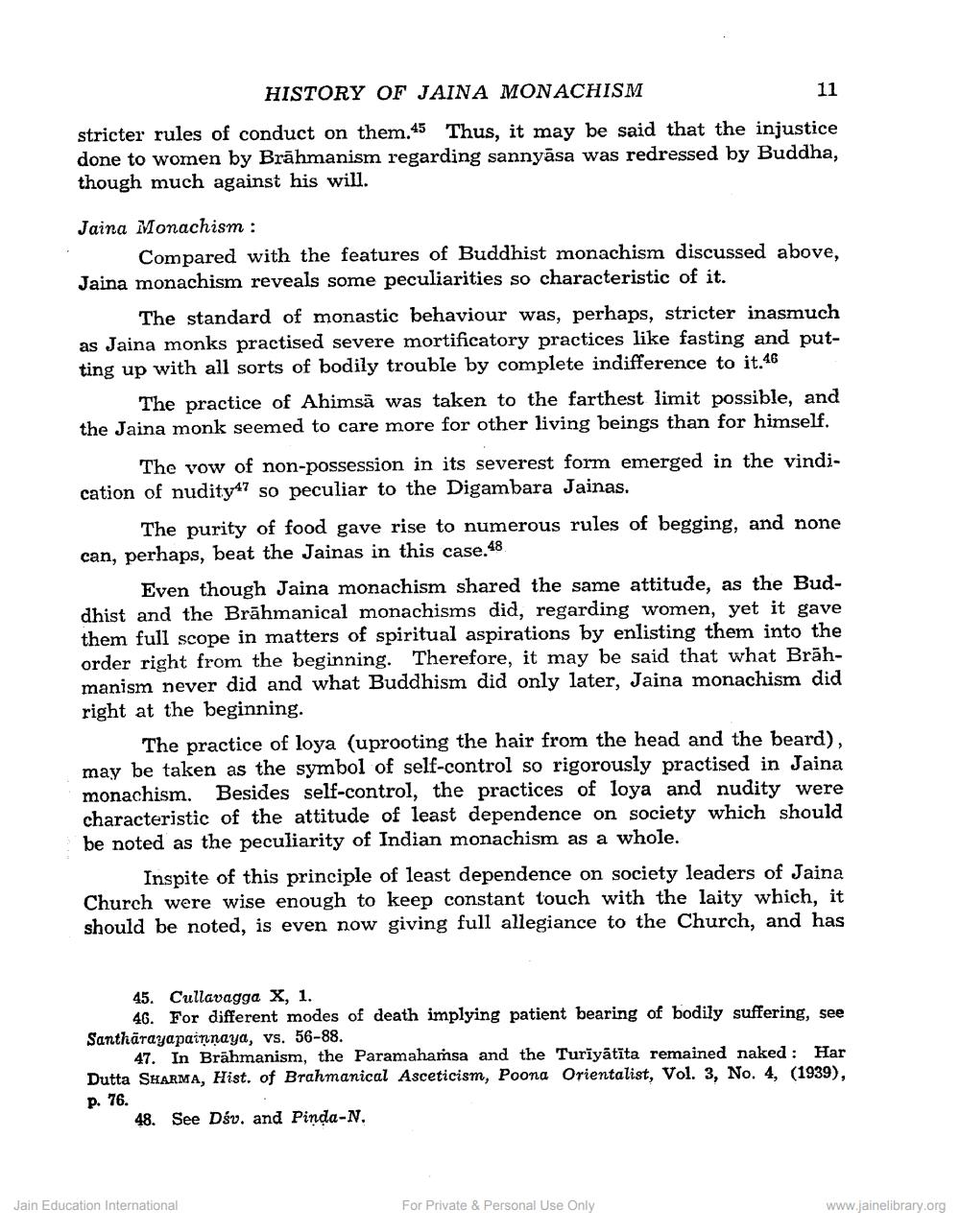________________
HISTORY OF JAINA MONACHISM
stricter rules of conduct on them.45 Thus, it may be said that the injustice done to women by Brähmanism regarding sannyasa was redressed by Buddha, though much against his will.
11
Jaina Monachism:
Compared with the features of Buddhist monachism discussed above, Jaina monachism reveals some peculiarities so characteristic of it.
The standard of monastic behaviour was, perhaps, stricter inasmuch as Jaina monks practised severe mortificatory practices like fasting and putting up with all sorts of bodily trouble by complete indifference to it.40
The practice of Ahimsä was taken to the farthest limit possible, and the Jaina monk seemed to care more for other living beings than for himself.
The vow of non-possession in its severest form emerged in the vindication of nudity so peculiar to the Digambara Jainas.
The purity of food gave rise to numerous rules of begging, and none can, perhaps, beat the Jainas in this case,48
Even though Jaina monachism shared the same attitude, as the Buddhist and the Brähmanical monachisms did, regarding women, yet it gave them full scope in matters of spiritual aspirations by enlisting them into the order right from the beginning. Therefore, it may be said that what Brahmanism never did and what Buddhism did only later, Jaina monachism did right at the beginning.
The practice of loya (uprooting the hair from the head and the beard), may be taken as the symbol of self-control so rigorously practised in Jaina. monachism. Besides self-control, the practices of loya and nudity were characteristic of the attitude of least dependence on society which should. be noted as the peculiarity of Indian monachism as a whole.
Inspite of this principle of least dependence on society leaders of Jaina Church were wise enough to keep constant touch with the laity which, it should be noted, is even now giving full allegiance to the Church, and has
45. Cullavagga X, 1.
46. For different modes of death implying patient bearing of bodily suffering, see Santharayapainnaya, vs. 56-88.
47. In Brahmanism, the Paramahamsa and the Turiyātīta remained naked: Har Dutta SHARMA, Hist. of Brahmanical Asceticism, Poona Orientalist, Vol. 3, No. 4, (1939), p. 76.
48. See Dśv. and Pinda-N.
Jain Education International
For Private & Personal Use Only
www.jainelibrary.org




